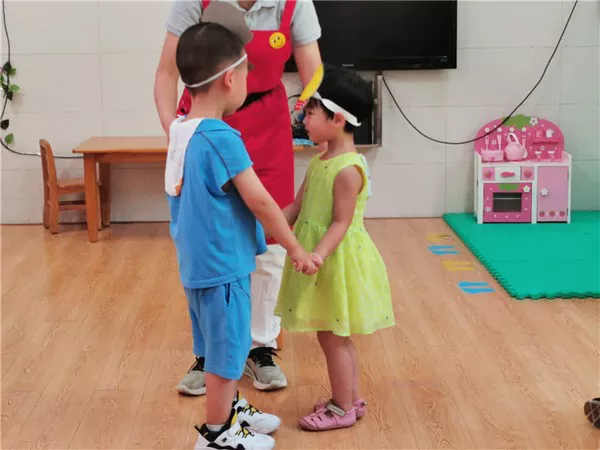Friendship is a cornerstone of human connection, providing companionship, support, and shared experiences. However, not all friendships are created equal, and sometimes, individuals find themselves in relationships that feel imbalanced. One-sided friendships, where the give-and-take is disproportionately skewed, are a nuanced aspect of social dynamics.
Defining a One-Sided Friendship
At its core, a one-sided friendship is characterized by an unequal distribution of effort, time, and emotional investment between two individuals. In a balanced friendship, both parties contribute to the relationship’s growth and well-being. In contrast, a one-sided friendship often involves one person consistently putting in more effort, while the other seems less engaged or invested. This imbalance can manifest in various ways, such as unequal initiation of plans, disproportionate emotional support, or a feeling that one person is doing the majority of the heavy lifting in the relationship.
Recognizing the Signs of a One-Sided Friendship
Identifying a one-sided friendship involves recognizing patterns and behaviors that indicate an imbalance in the relationship. One common sign is the consistent initiation of contact or plans by one individual, while the other is less proactive in maintaining the connection. Additionally, a lack of reciprocity in terms of emotional support and active listening can be indicative of a one-sided dynamic. Paying attention to how often efforts to connect are met with enthusiasm or reciprocation provides insights into the balance of the friendship.
Another telltale sign is the feeling of being taken for granted or unappreciated. If one person feels that their contributions to the friendship are consistently undervalued or overlooked, it may be a sign that the relationship is one-sided. Trusting one’s instincts and acknowledging these feelings is an essential first step in addressing and navigating the complexities of a one-sided friendship.
Causes and Contributing Factors
One-sided friendships can stem from various causes and contributing factors. Differences in communication styles, expectations, or life circumstances can lead to imbalances in the level of engagement within a friendship. For example, if one person is going through a particularly challenging time, their ability to invest in the friendship may be temporarily limited.
Mismatched expectations and boundaries can also play a role. If one person in the friendship has different assumptions about the level of commitment or support expected, it can result in an uneven distribution of effort. Additionally, life changes such as career transitions, geographical moves, or entering into new relationships can impact the dynamics of a friendship, potentially leading to a shift in the balance of effort and investment.
Impact on Well-being
The consequences of a one-sided friendship can have a significant impact on the well-being of the person who feels their efforts are not reciprocated. Feelings of loneliness, frustration, and disappointment may arise as a result of the perceived imbalance. Moreover, if the issue persists, it can erode the foundation of trust and connection within the friendship, potentially leading to the deterioration of the relationship.
Individuals in one-sided friendships may also experience emotional exhaustion, as the burden of maintaining the relationship falls disproportionately on their shoulders. The lack of mutual support and understanding can contribute to stress and negatively affect mental health. It is essential for individuals to be attuned to the emotional toll of a one-sided friendship and take proactive steps to address the imbalance.
Communication Strategies
Addressing a one-sided friendship often begins with open and honest communication. Expressing one’s feelings, concerns, and needs is crucial for fostering mutual understanding. Using “I” statements to convey emotions and observations can help frame the conversation in a non-confrontational manner. For example, expressing, “I’ve noticed that I’m often the one initiating our plans, and it makes me feel like our friendship might be a bit one-sided,” opens the door for dialogue without placing blame.
Active listening is equally important during these conversations. Understanding the other person’s perspective, acknowledging their feelings, and creating space for them to share their thoughts can contribute to a more constructive and empathetic exchange. It’s essential to approach the conversation with a genuine desire to improve the friendship rather than assigning blame or seeking to prove a point.
Setting Boundaries
Establishing clear boundaries is a crucial aspect of addressing and rectifying a one-sided friendship. Boundaries define the expectations and limits within a friendship, ensuring that both individuals are on the same page regarding their commitments and contributions. For example, setting boundaries around communication frequency, initiating plans, or expectations for emotional support can help create a more balanced dynamic.
Communicating boundaries assertively yet respectfully is key. It involves expressing needs and expectations clearly while acknowledging the other person’s perspective. Boundaries serve as a framework for creating a healthier friendship, fostering a sense of mutual respect, and preventing the recurrence of imbalances.
Reassessing and Adjusting Expectations
Reassessing and adjusting expectations is an ongoing process in any friendship, particularly in the context of one-sided dynamics. Individuals may enter into friendships with certain assumptions or expectations, and these may need to be revisited as the relationship evolves. Reflecting on whether expectations align with the current reality of the friendship can be a valuable exercise.
It’s essential to recognize that friendships, like all relationships, are dynamic and subject to change. Adjusting expectations involves being open to the evolving nature of the friendship, understanding that circumstances and individuals can change over time. This flexibility allows for a more adaptive and resilient approach to maintaining balanced connections.
Knowing When to Reevaluate the Friendship
In some cases, despite efforts to address imbalances, a friendship may persist in its one-sided nature. Knowing when to reevaluate the friendship and consider whether it continues to contribute positively to one’s well-being is an important aspect of self-care. Reflecting on the overall impact of the friendship on mental and emotional health can provide insights into whether the relationship is sustainable.
Consideration of whether the friendship aligns with personal values, promotes mutual growth, and provides a sense of support is crucial. If the imbalance persists despite communication, boundary-setting, and reassessment of expectations, individuals may need to make difficult decisions about the future of the friendship. Prioritizing one’s well-being and recognizing when a friendship may no longer be healthy or fulfilling is an act of self-respect.
Cultivating Healthy Friendships
Navigating one-sided friendships underscores the importance of cultivating and maintaining healthy connections. Proactively engaging in friendships that are reciprocal, supportive, and aligned with one’s values contributes to a more fulfilling social life. Building a network of friends who share similar interests, values, and levels of commitment enhances the likelihood of creating balanced and mutually satisfying relationships.
Investing time in self-reflection to understand one’s own needs, preferences, and boundaries is a valuable precursor to cultivating healthy friendships. Being intentional about choosing friendships that align with these self-discoveries sets the stage for more authentic and balanced connections.
Conclusion
Friendship is a dynamic and evolving aspect of human experience, and one-sided dynamics can pose challenges to the health and well-being of individuals involved. Recognizing the signs of a one-sided friendship, understanding its potential causes, and employing effective communication and boundary-setting strategies are essential steps in navigating these complexities. By reassessing expectations, knowing when to reevaluate a friendship, and actively cultivating healthy connections, individuals can foster relationships that contribute positively to their lives. Ultimately, the journey towards balanced and meaningful friendships involves a commitment to self-awareness, open communication, and the ongoing pursuit of connections that enrich and support both individuals involved.
Related topics:


















